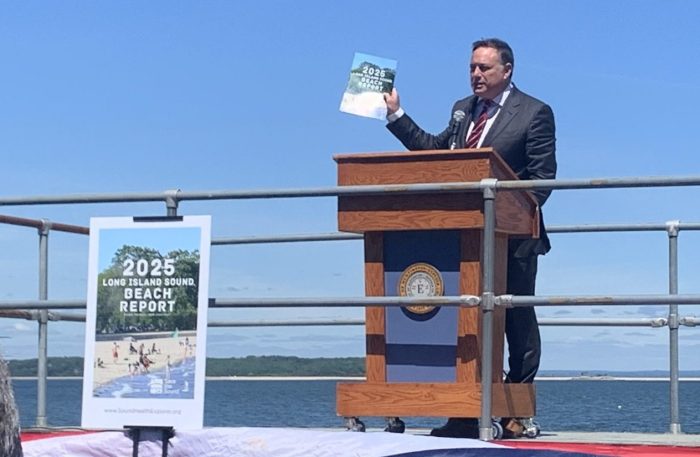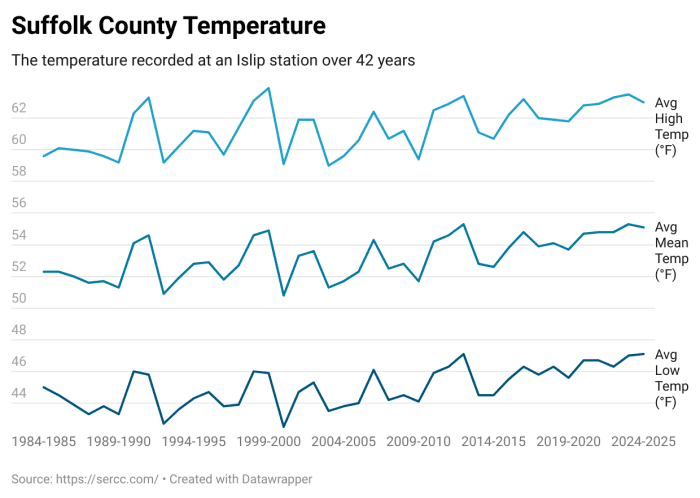By Sabrina Artusa
On May 20, Save the Sound, an environmental organization that analyzes the water quality of the Long Island Sound, compiled data revealing updated scores of beaches along Long Island’s coastline. The biennial report focuses on beach water quality, bacteria levels and swimming safety.
The report was launched at a conference at Centerport Beach, with Huntington Supervisor Ed Smyth (R) and Cornell Cooperative representatives present as Save the Sound Vice President of the Center for Water Protection David Ansel presented the grades, challenges and solutions for the Long Island Sound water quality.
Using data collected by the departments of health that conduct the beach monitoring, the beach report department of health, the beach report revealed an increase in wet weather that led to a decline in water quality. Consistently, samples collected within 48 hours of a quarter-inch or more of rainfall revealed diminished water quality. Indeed, there was an overall increase in samples that failed to meet state standards for bacteria concentration (including beaches in Connecticut).
The grades, ranging from an F to an A+, are determined based on the presence of enterococcus bacteria. Swimmers can become sick if they swim in waters with unsafe concentrations of this fecal indicator bacteria. A failing sample contains 104 colony forming units per 100 ml.
New York City and other areas surrounding the part of the Long Island Sound known as “the narrows” continue to receive low grades as the water is less often flushed out as opposed to beaches in eastern Suffolk County.
Samples taken after precipitation contained higher levels of the bacteria suggest that pollutants are getting washed into the water. Ansel said “green infrastructure” can help. Paved areas do not allow for storm water absorption, instead leading runoff, and all the pollutants like oil and debris it picks up on the way, to run straight to the water.
“We have seen high incidents of wet weather in the last number of years and we believe it is having a negative effect on the scores for the beaches. In our last beach report 78% of the beaches received As and Bs. In this year’s report 72% of the beaches are receiving As and Bs,” Ansel said, adding that we are coming off the wettest two-year stretch with 44 inches of rain.
Animal waste is a big contributor to the presence of the bacteria in the water. Cleaning garbage, maintaining sewers and planting native plants can help minimize fecal-bacteria contamination.
Ansel is active in advocating for solutions that would improve the Sound. The same day of the conference, he traveled to Albany to testify that more data is needed regarding algal blooms in saline water.
“We are hopeful that there will be a conversion of Rikers Island to a water treatment facility that would have a materially positive impact on the Western Narrows of New York City and New York Sound.”
Smyth said the town began harvesting sugar kelp in 2022 and implemented a program for spawning oysters, which help filter the water. Huntington even supplies other municipalities with oysters shell stock to grow.
“The sugar kelp is native to Long Island and requires little to no effort to grow in Long Island’s bays and harbors. The benefit is it improves water quality by removing harmful nitrogen which causes algae blooms,” Smyth said.
Deputy Supervisor John McCarron said they harvest the kelp and grind it to a powder, which is then used as fertilizer.
Although the town has only been harvesting sugar kelp for three years, McCarron said he has noticed positive growth with marine wildlife diversity, with various species of fish dwelling by the kelp. The presence of wildlife seemed like a good sign. “This means it is doing something to clean up the area,” he said.
High scoring beaches include Port Jefferson beach and Cedar Beach West, which had an A- and A+ respectively.






